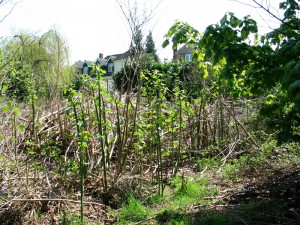Identifying Japanese knotweed
 Japanese knotweed, or Fallopia Japonica, is a member of the Buckwheat family, and has various derivatives including Giant knotweed and Himalayan knotweed. It was introduced to the UK in the 1800s as a garden plant and has since spread to railways, riverbanks, farm hedges and industrial sites.
Japanese knotweed, or Fallopia Japonica, is a member of the Buckwheat family, and has various derivatives including Giant knotweed and Himalayan knotweed. It was introduced to the UK in the 1800s as a garden plant and has since spread to railways, riverbanks, farm hedges and industrial sites.
Normally it has a thick, central stand of plants. These have bamboo-like stems and large, oval green leaves, which die back after frost, leaving the stems standing over winter. In the autumn, it has white flowers but will not set seed in the UK.
Underground, it has an extensive system of rhizomes (root systems) that will spread up to seven metres from the plants and may be to a depth of 3 metres. Plants spread from the rhizomes and even a fragment as small as .8gram can form a new plant. This may be viable for many years.
We can from any plant material identify whether you have Japanese knotweed.


